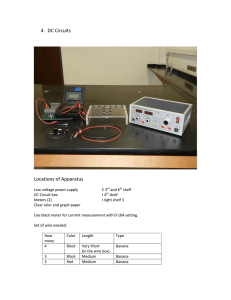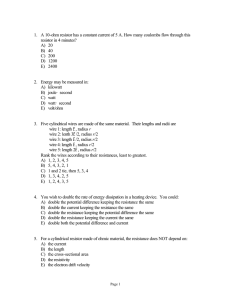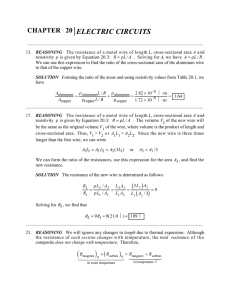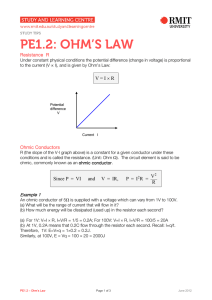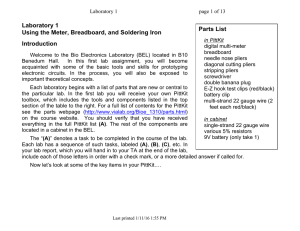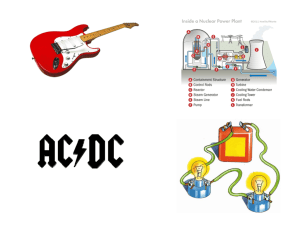1. What`s another name for a coulomb per second (C/S)? a. Amp 2
advertisement
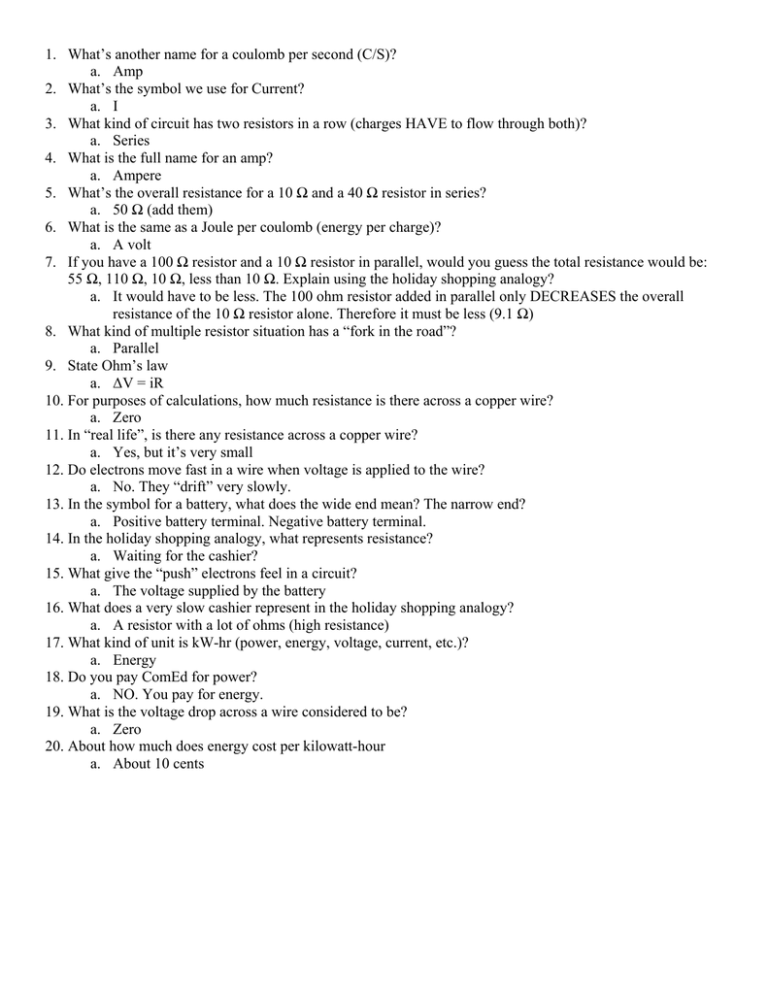
1. What’s another name for a coulomb per second (C/S)? a. Amp 2. What’s the symbol we use for Current? a. I 3. What kind of circuit has two resistors in a row (charges HAVE to flow through both)? a. Series 4. What is the full name for an amp? a. Ampere 5. What’s the overall resistance for a 10 Ω and a 40 Ω resistor in series? a. 50 Ω (add them) 6. What is the same as a Joule per coulomb (energy per charge)? a. A volt 7. If you have a 100 Ω resistor and a 10 Ω resistor in parallel, would you guess the total resistance would be: 55 Ω, 110 Ω, 10 Ω, less than 10 Ω. Explain using the holiday shopping analogy? a. It would have to be less. The 100 ohm resistor added in parallel only DECREASES the overall resistance of the 10 Ω resistor alone. Therefore it must be less (9.1 Ω) 8. What kind of multiple resistor situation has a “fork in the road”? a. Parallel 9. State Ohm’s law a. ΔV = iR 10. For purposes of calculations, how much resistance is there across a copper wire? a. Zero 11. In “real life”, is there any resistance across a copper wire? a. Yes, but it’s very small 12. Do electrons move fast in a wire when voltage is applied to the wire? a. No. They “drift” very slowly. 13. In the symbol for a battery, what does the wide end mean? The narrow end? a. Positive battery terminal. Negative battery terminal. 14. In the holiday shopping analogy, what represents resistance? a. Waiting for the cashier? 15. What give the “push” electrons feel in a circuit? a. The voltage supplied by the battery 16. What does a very slow cashier represent in the holiday shopping analogy? a. A resistor with a lot of ohms (high resistance) 17. What kind of unit is kW-hr (power, energy, voltage, current, etc.)? a. Energy 18. Do you pay ComEd for power? a. NO. You pay for energy. 19. What is the voltage drop across a wire considered to be? a. Zero 20. About how much does energy cost per kilowatt-hour a. About 10 cents




